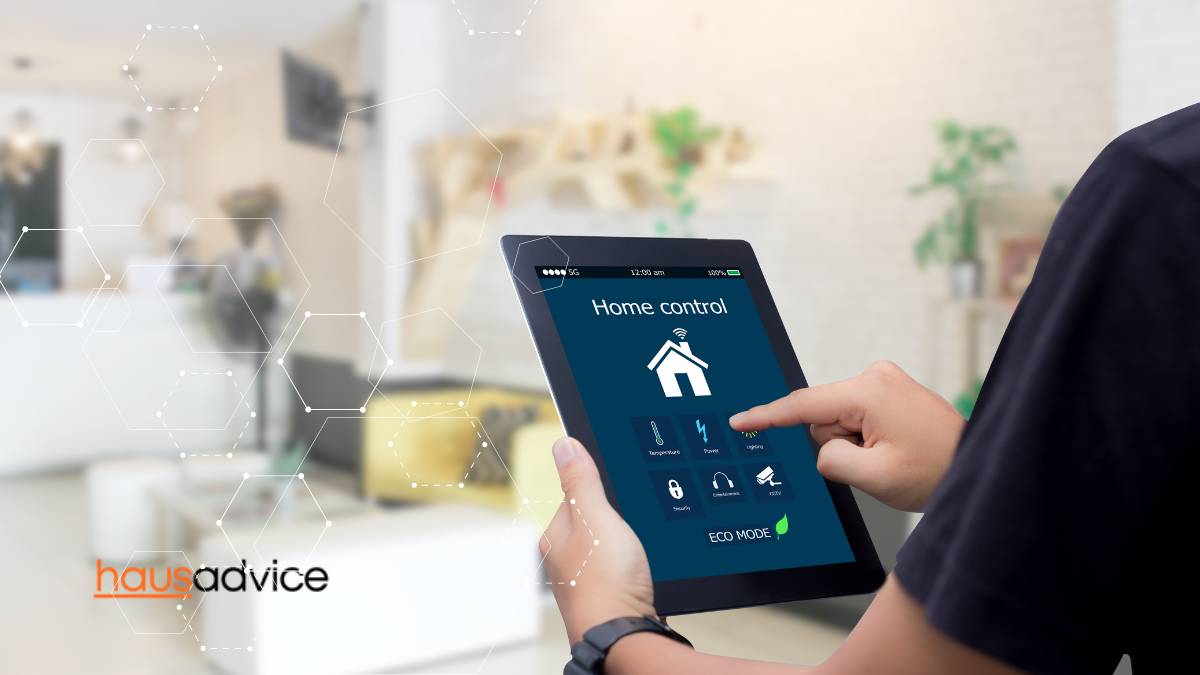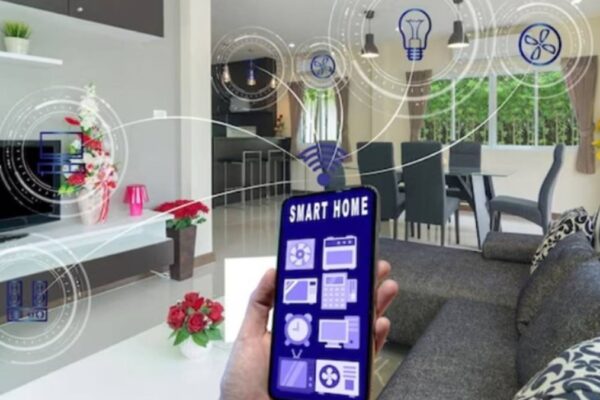Our lives have become more convenient and effective thanks to home automation, which enables us to manage many parts of our houses with only a few touches on our smartphones. Smart home appliances provide a wide range of capabilities, including the ability to control the temperature and monitor security cameras.
To secure our houses from possible attacks, however, more security measures are required along with this convenience. To make sure your smart home is safe and secure, in this post we’ll look at 18 home automation security tips.
Home Automation Security Tips
1. Secure Your Wi-Fi Network
The backbone of your smart home, linking all of your gadgets to the internet, is your Wi-Fi network. It is essential to ensure its security:
- Select a Strong Password: Make your Wi-Fi password complicated and one-of-a-kind by combining upper- and lowercase letters, digits, and symbols. Avoid using passwords that are simple to guess, such “password123.”
- Implement WPA3 Encryption: The newest and safest encryption standard, WPA3, will improve the security of your router. Unauthorized users will find it far more difficult to access your network as a result.
- Change the Default Router Login Information: Potential hackers frequently know the router’s default login and password. In order to prevent unwanted access to your router’s settings, change these credentials to something that only you know.
Did you know: 79% of residential WiFi networks have weak passwords, endangering their security.
– Onserve
2. Use Strong Passwords
Your first line of protection against unwanted access to your smart devices and online accounts is to use strong passwords:
- Complexity is Important: You should use a combination of letters, numbers, and special characters in your long, complicated passwords.
- Don’t Use Common Words: Avoid using phrases or words that are simple to guess, such as “12345” or “password.”
- Specific to Each Device: Use different passwords for each of your online accounts and smart devices. This keeps your other accounts safe even if one of your passwords is hacked.
- Consider a password manager: Keeping track of several complicated passwords might be difficult. Using a trustworthy password manager may make life simpler and more safe by helping you create, store, and auto-fill your passwords.
3. Regularly Update Software and Firmware
Our next home automation security tip, is to update your software regularly. It’s crucial to keep your software and device firmware up to date:
- Security Patches: To address security flaws, manufacturers offer upgrades and patches. Update your gadgets frequently to keep safe from the most recent dangers.
- Automatic Updates: When feasible, turn on automatic updates so that your devices can install fixes as soon as they become available. This lowers the chance of missing updates.
- Visit the websites of the manufacturers: Updates might not always be pushed out automatically. Check the manufacturer’s website to check if your devices have any new updates available.
4. Enable Two-Factor Authentication (2FA)
When checking in with 2FA, you normally need to provide a one-time code that was received to your email or mobile device. Without this code, even someone who knows your password cannot access your account.
- Enable 2FA: Whenever it’s an option, turn on 2FA for your accounts. This capability is available on well-known services like Google, Facebook, and email providers.
- Backup Codes: Keep a copy of the service’s backup codes in case you lose access to your main form of login.
Did you know: The use of two-factor authentication (2FA) can stop 100% of automated bots, 96% of phishing assaults, and 76% of targeted attacks, but it also raises the risk of account lockout due to lost or stolen phone numbers or second email addresses.
– Gitnux
5. Secure Your Smart Home Hub
Your smart home’s hub serves as its central control panel. Protect it to preserve your ecosystem as a whole:
- Strong Password: Make sure your smart home hub has a strong password, much like your Wi-Fi.
- Regular Updates: To guard against known vulnerabilities, keep the hub’s firmware up to date.
- Network segmentation: To improve security, if at all feasible, put the hub on a different network segment. This makes it difficult for potential attackers to get to your primary control point.
6. Implement Network Segmentation
The method of segmenting your network into various groups, separating smart gadgets from vital systems, is known as network segmentation:
- Create Guest Network: In order to keep your smart devices distinct from your primary network, create a guest network. Potential hackers won’t have immediate access to important information in this way.
- Routers and Firewalls: Use network segmentation-supporting firewalls and routers. These gadgets can stop illegal communication between various network parts.
7. Protect IoT Devices
Smart lights and thermostats are examples of Internet of Things (IoT) equipment that, if not adequately protected, might become susceptible targets:
Change Default Credentials: Always use something special and complicated as the login and password on your IoT devices.
Update on a regular basis: Look for firmware updates from the makers and immediately install them. This lessens the possibility of exploiting known vulnerabilities.
8. Secure Smart Cameras and Doorbells
Your smart home’s security cameras and doorbell cameras may be weak spots:
- Strong Passwords: For your camera devices, always use strong, one-of-a-kind passwords.
- Disable Remote Access: If you don’t require remote access to your camera feeds, turn it off. Use this function just in case.
9. Encrypt Your Data
Data encryption makes sure that even if someone intercepts your data, they won’t be able to access it without the decryption key:
End-to-End Encryption: When dealing with sensitive data, such as security camera feeds or private information, use services and gadgets that offer end-to-end encryption.
10. Use a VPN for Remote Access
Use a Virtual Private Network (VPN) to access your smart home from the outside:
Secure Connection: A VPN encrypts your internet connection, making it harder for others to intercept data in transit.
Did you know: Americans who don’t use VPNs (59% of them) think they don’t need one.
– Security.org
11. Monitor Your Network
Check your network often for any indications of intrusion:
Intrusion Detection Systems (IDS): Consider deploying intrusion detection systems (IDS) that can notify you of unusual behavior on your network.
12. Be Cautious with Voice Assistants
Smart speakers and other voice-activated gadgets sometimes capture private information:
Check Stored Data: Regularly check and purge voice recordings that your voice assistant devices have saved.
13. Disable Unnecessary Features
There may be features on certain smart gadgets that you don’t use that might be security risks:
Disable Unused Features: To lessen possible security risks, turn off any features or devices that are not in use.
14. Physical Security Measures
Don’t forget physical security in addition to digital security:
- Lock Doors and Windows: When leaving the house, be sure to lock the doors and windows.
- Security Systems: Consider implementing security systems that include cameras, motion detectors, and alarms.
15. Educate Your Family
Everyone in your home has to understand how crucial security is in a smart home:
Family Training: Inform your family members about secure password usage and safe internet conduct.
16. Make Regular Data Backups
Data loss can happen for a number of causes, such as breaches or device issues:
Backup Your Data: Frequently copy critical information to a safe place, such a cloud service or an external hard drive.
17. Keep an Eye on Manufacturer’s Updates
To increase the security of their products, manufacturers often make updates:
Check for Updates: Be aware of any updates that your smart device’s makers may give, and be sure to apply them right away.
18. Test Your Security Measures Frequently
You may find flaws and vulnerabilities by regularly evaluating your security setup:
Security Evaluations: Conduct frequent security evaluations of your smart home. This might entail doing penetration tests, vulnerability scans, or enlisting expert help to assess your system.
Home Automation Security Tips FAQs
Are smart homes secure?
Yes, provided you adhere to the right security precautions like strong passwords, frequent upgrades, and network segmentation, smart homes can be secure.
How can I protect my IoT devices?
On your IoT devices, alter the default usernames and passwords, and maintain the firmware up to date.
Should I use a VPN for remote access to my smart home?
It is advised to use a VPN for remote access since it offers an additional degree of protection.
Why is it important to disable unnecessary features in a smart home?
Unused feature disabling lowers potential security risks and vulnerabilities.
How often should I test my smart home security measures?
It is advised to conduct security assessments on a regular basis, ideally once every few months, in order to spot and fix problems.
Final Words
You can profit from a smart home without sacrificing security by adhering to these home automation security tips. To maintain a safe and secure atmosphere in your house, safeguard your gadgets and data and practice vigilance.

